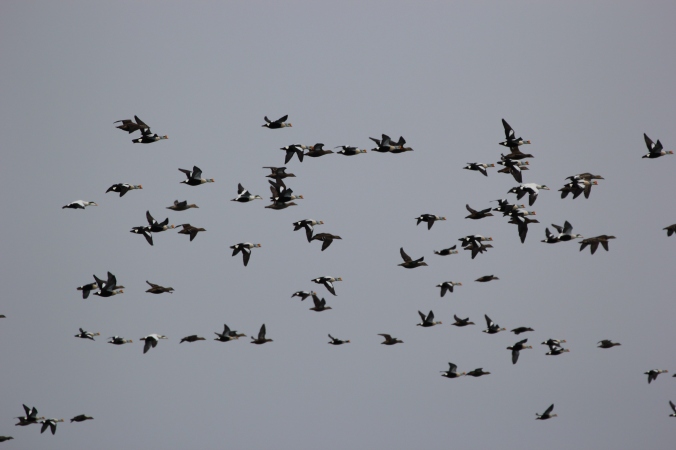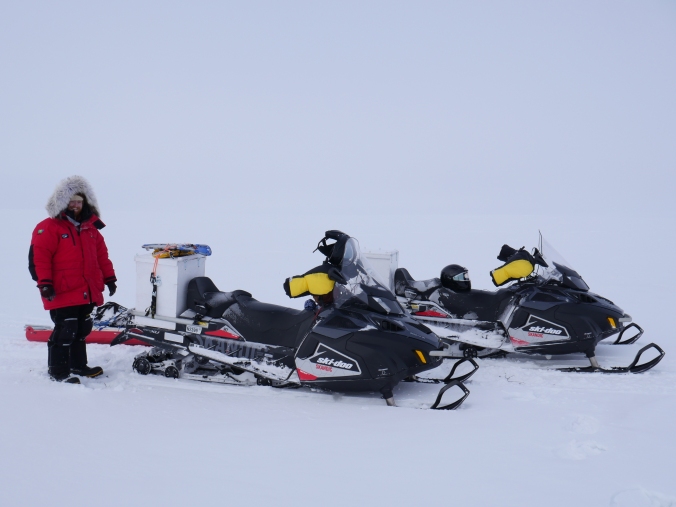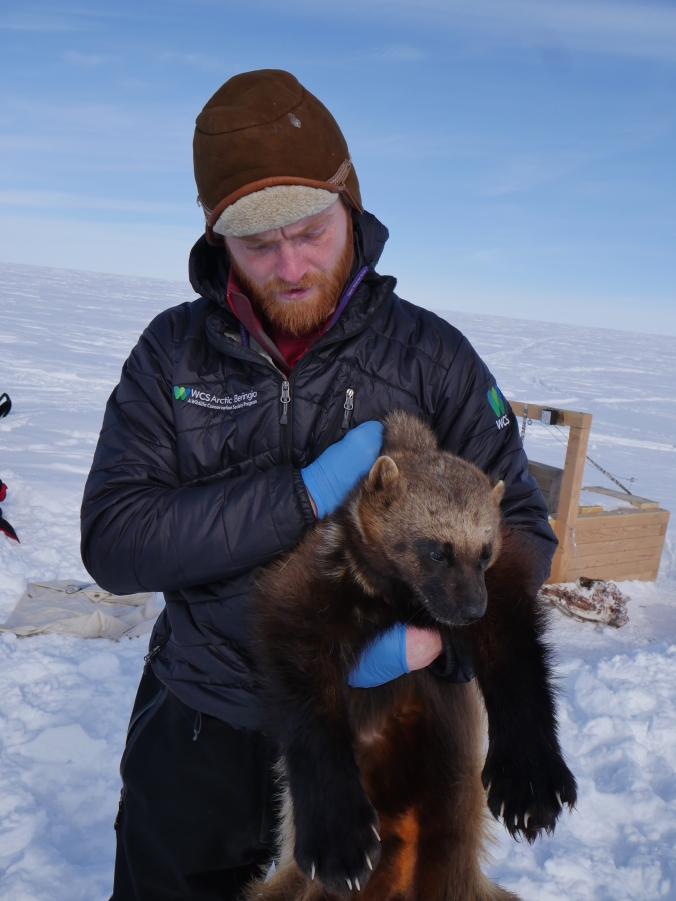This April we had the chance to travel back to our summer stomping grounds in Cape Krusenstern National Monument. We arrived in Kotzebue to a wash of white; what was previously a sea of rolling swells and breaking waves was now a sheet of ice as far as the eye could see. Despite the early spring conditions, a brisk breeze continued to blow through town, sending chills down limbs.
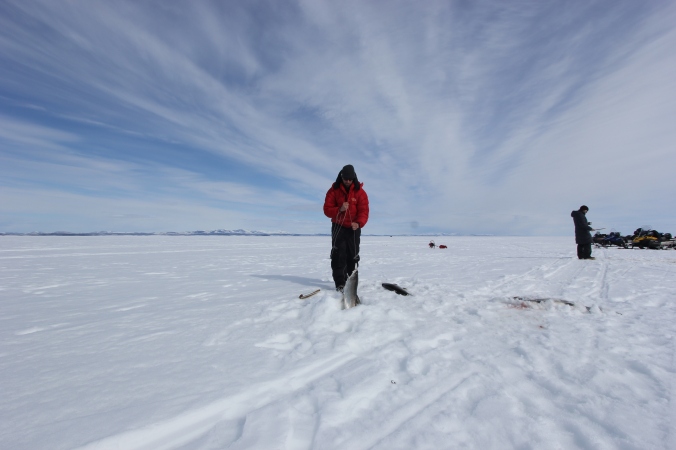
Trevor Haynes pulling a sheefish through the ice. Photo M. Tibbles.
Our first day in town, we had the opportunity to travel to Kobuk Lake by snow machine to go ice fishing, accompanied by old and new friends including Bill Carter and the Selawik National Wildlife Refuge office, Alex Whiting (Native Village of Kotzebue), Todd O’Hara (UAF), and several subsistence fishermen. We drilled holes through the 5 feet of ice with a gas-powered auger, hoping to catch some sheefish. Beneath the ice, schools of sheefish swam by our holes in waves. It would be quiet, heads down, hands jigging. Suddenly, exclamations would come from all around the group as giant silver sheefish were dragged onto the surface of the ice. We caught over 50 fish as a group in the span of a few hours, and everyone went home thrilled after having such a fantastic day of fishing. These fish are essential to the food security of this and many other villages in the region.
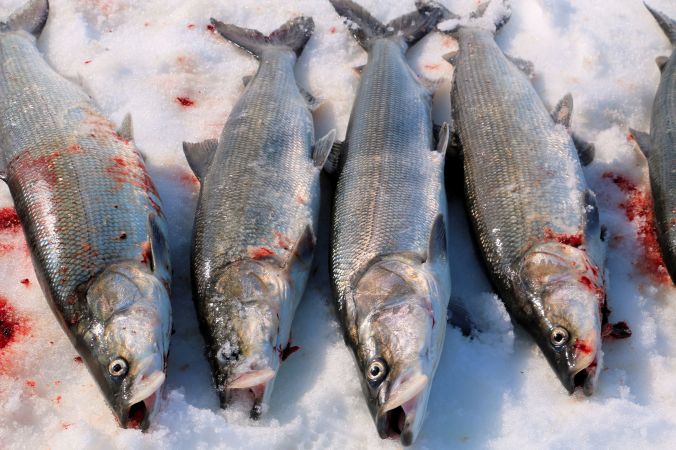
Sheefish. Photo A. Whiting.
Not only were the fish plentiful that day, so were the caribou. We had the luck to watch a herd of caribou stream down onto the ice, briefly unaware of our existence. The sounds of snow machines alerted the herd to our presence shortly after their appearance and they headed back up off the ice.
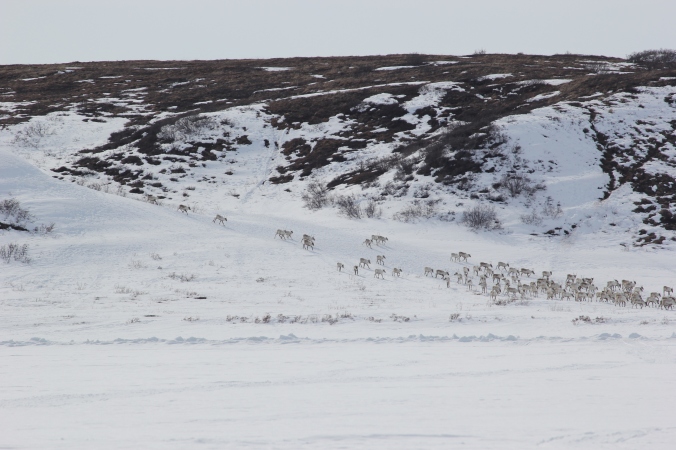
Caribou streaming down from the hills onto Kobuk Lake. Photo T. Haynes.
The real work for us began two days later with a snow machine trip across Kotzebue Sound and into the frozen maze of wetlands surrounding two of the lagoons we monitor during the summer months –Krusenstern and Aukulak lagoons. We drilled several holes in creeks and sloughs to observe the ice thickness and the presence and conditions of any water below the ice. We were looking for oxygenated water, which indicates areas where fish could survive the long winter under the ice. This is part of our effort to work with local experts towards understanding where fish overwinter and find the critical habitats that are often ignored by researchers due to the difficulty of sampling during the cold harsh winters.
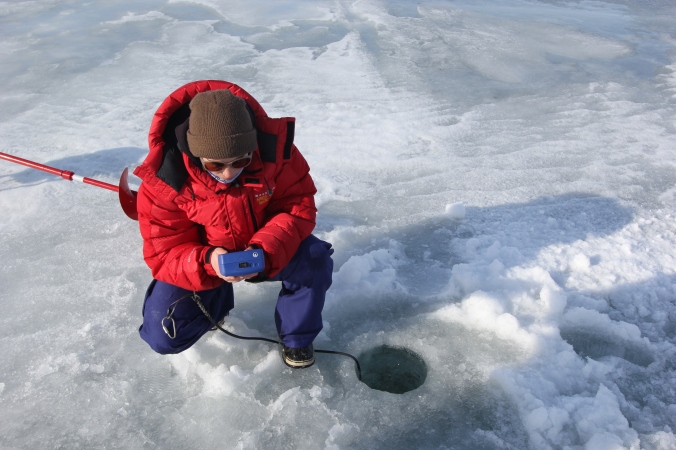
Marguerite Tibbles measuring water quality parameters beneath the ice. Photo T. Haynes.
When we finally reached Krusenstern Lagoon, we watched a red fox scamper off into the distance. We took an ice core from the lagoon to determine the salt balance in the winter. Measuring the salinity of the ice core as well as the water beneath the ice and comparing these measurements with the salinity of the water before freeze-up will allow us to determine if Krusenstern Lagoon has a connection to the marine environment during the winter. Understanding the physical properties of the lagoons is another important step in revealing the mysteries of the coastal lagoons of the Arctic.
All of these preliminary measurements will guide future efforts to find overwintering habitat of fish and monitor ice conditions in partnership with the National Park Service. This exploratory trip was a huge success thanks to the help of so many people, and will hopefully become a yearly excursion.
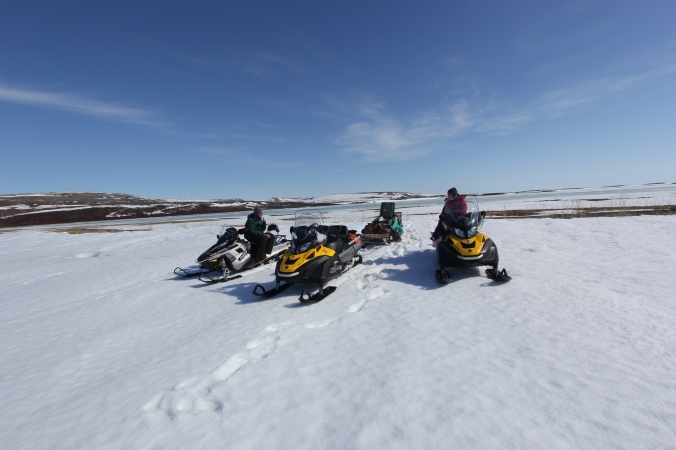
The crew eating lunch at Cape Krusenstern Lagoon. Photo T. Haynes.
